- Home
- Jason Webster
Violencia Page 10
Violencia Read online
Page 10
This is how the taifas were born – the small, petty kingdoms, or ‘party kings’, as the word translates into English. ‘Party’ as in political faction, but the play on words is fortuitous, for despite being a period of constant internal warfare, this was also a hedonistic age – at least on the Moorish side. With central authority gone, the taifas sprang up in different ways. In some cases local bosses simply carried on as before, but no longer answering to Cordoba. In other places, military factions took over, their commanders hailing from Berber families or, in some instances, having Slavic origins, former slaves now becoming rulers in spectacular feats of social climbing. Not all of them were created at once – the process took time. And although as many as two dozen or more existed at one time or another, their numbers waxed and waned as they engaged in near permanent warfare among themselves, smaller kingdoms often being absorbed into larger ones in a scrabble for power and land.
The picture is complicated, not least because while the Moorish states were fighting among themselves, they were often also engaged in battles with the Christian states to the north, creating a multi-dimensional chessboard in which allegiances often crossed religious lines, and Moors and Christians regularly fought side by side against common foes with a similarly mixed religious make-up. As the eleventh century progressed, religious differences did to a degree become more important, particularly as the concept of ‘holy war’ – long established in the Islamic world – began to take hold within Christendom. But far from being black or white, the situation was generally both black and white at the same time – as things in Spain tend to be. This was the world in which men like El Cid – adventurers and chancers – were able to flourish.
The Taifas, a constant Spanish refrain
Some of the taifas were more successful than others. The kingdom of Denia on the eastern coast started essentially as a pirate state which preyed on shipping off the coast. Expanding into the Balearic Islands, it eventually spread as far as Sardinia, becoming a powerful player in the western Mediterranean. A taifa was also established at this time at Granada; previously the main city in the area had been at Elvira in the fertile plains of the Vega, but the taifa rulers founded their new home in the foothills of the Sierra Nevada, a much more easily defendable location in the more warlike environment. A leading vizier at the Granadan court was the Jewish rabbi and poet Samuel ibn Naghrela. This is how he describes a battle between the Granadans and the taifa of Almería in 1038:
At sunrise all the earth appeared to melt;
The solid ground was tottering like a drunkard.
The horses charging, wheeling, backing off,
Were like snakes darting in and out of holes.
The spears, as they flew, flashed in the sun
Like shafts of lightning, filling the air with fire . . .
And the blood of men coursed on the ground
Like rams’ blood in the Temple of the Lord.
Luckily for Ibn Naghrela, the Granadans emerged from the battle victorious:
The heads of many lords lay on the ground
Like figs that sell a thousand for a fils.
The bloated corpses of fallen princes lay
Like swollen wine-skins or heavily pregnant women.
Slaves lay beside their masters, beggars
Next to kings, all one rank,
All turned to dung.
The battle was personal: a vizier on the opposing side had previously called for Ibn Naghrela to be executed. Now the Jewish vizier took his revenge, imprisoning his foe and having him executed:
. . . my enemy
Died like a dog on the festival of the Torah.
Vivid and emotionally honest, Ibn Naghrela’s poem is an example of a Golden Age for Hebrew letters at this time, in which Jewish writers composed verse in Hebrew, rather than Arabic, for the first time. It is also indicative of the cultural flourishing throughout Moorish Spain that existed side by side with the constant civil wars. Ceramics, ivory work, music and the decorative arts all blossomed. But following a long-established tradition dating back to pre-Islamic days, poetry was held as the highest form of artistic expression.
One of the most celebrated poets of the day was Al-Mu’tamid, who as well as being an accomplished writer was also king of the taifa of Seville.
Many a night I spent enjoying their shadows
With maidens round-hipped and slim of waist;
Their white and brown beauty pierced my heart
Like white blood-spilling swords and points of brown lances.
And those nights spent playfully on the river dam
With a girl whose arm bracelet was like the crescent moon.
She would pour me wine with bewitching glances,
At times in a cup, at others in her kisses.
The tunes played on her lute stirred me, as though
I heard in her chords the clash of sword blades.
Then she let her robe fall, her magnificent figure like
A bud unfolding from a cluster of blossoms.
Scimitars and seduction, sex and violence – Al-Mu’tamid’s poetry encapsulates the mood of the time, its hedonism, admiration for high culture, and constant threat of a gruesome end. When not fighting his neighbours, Al-Mu’tamid would hold night-time poetry and music contests on the Guadalquivir on boats illuminated with torches. Extravagance was the keynote to his rule: when his favourite wife – a Christian girl from the north – cried that she would never see the snows of her native land again, Al-Mu’tamid had an entire grove of almond trees planted outside her bedroom window one night. ‘There!’ he proclaimed, pointing to their bright blossom the following morning. ‘There is your snow!’
Seville was not alone in becoming a cultural centre at this time. Like the city states of medieval and Renaissance Italy three and four centuries later, the taifa kingdoms expressed their rivalry through the achievements of artistic and intellectual lights at their respective courts. The pirate kings of Denia surrounded themselves with Quranic scholars; the king of Badajoz compiled (or, more probably, had compiled for him) an encyclopedia fifty volumes long; an astronomer at Toledo built a water clock which became famous throughout the Peninsula; while the ruler of Zaragoza was an accomplished astrologer, geometrist and philosopher.
Culturally and politically, Seville was the leading taifa state, yet its power was never such that it could reunite Moorish Spain under one rule. As often in Spanish history, it would require a greater force, one from outside the Peninsula, to achieve that.
Christian Spain at this time was equally divided, and the taifas on the Moorish side were reflected almost perfectly by the myriad counties and kingdoms in which Christianity was the official faith. And during a period of such political complexity, raw military might became the single most important factor for success. Not surprisingly then, the eleventh century saw the rise of Castile, a region which would go on to stamp its mark on the Peninsula like no other. Born as a small county on the fringes of the kingdom of León, it was the martial spirit of the Castilians – men originally from the mountains around Oña to the north of Burgos – which marked them out; while the Leónese preferred a more peaceful life, the Castilians were warriors willing to take the fight to the Muslims. As a result, their county expanded and their power increased. In 1065, Castile became a kingdom in its own right.
Yet there is an interesting difference between the taifas and the Christian kingdoms: while lack of unity led Moorish territory to shrink in size, division on the Christian side was no barrier to expansion and conquest. From being the undisputed supremo of the Peninsula in the tenth century, in only a hundred years Al-Andalus as a whole was placed on the back foot as Christian lords started taking larger nibbles out of the Moorish lands on their southern borders.
The advance effectively caught the Moors napping.
‘Because the rays of the sun do not fall perpendicularly upon their heads, their climate is cold and the atmosphere cloudy. For that reason their temperament has becom
e cold and their humour uncouth. Their bodies have stretched, their complexion has become light and their hair long. They lack, moreover, acuteness and intellectual penetration, for indeed there is great foolishness and madness among them.’
So wrote a Moorish judge in Toledo about the northerners at this time, and his opinion was most likely shared by other inhabitants of Al-Andalus. But this lack of respect for the enemy brought danger. In a surprise move which shook Moorish Spain, Toledo fell into Christian hands in 1085, only fifteen years after the judge’s death. Despite many counter-attacks, the city would never be ruled by Muslims again.
The old Visigothic capital was once more under the Cross. For Christian Spaniards – and indeed around Christian Europe as a whole – it was a cause for great celebration, the first major victory against the Moors since the invasion of 711.
For the Moors, it was a disaster. Down in Seville, the poet–king Al-Mu’tamid was about to make a very difficult decision.
MOORISH VIEWS OF CHRISTIANS
Moorish attitudes towards Christians were varied, and shifted over the many centuries of Al-Andalus. One constant, however, and a view which echoed throughout the Mediterranean following the arrival of the Crusades, was a combination of disgust and bemusement at Christian washing habits – or rather their lack of them.
In the eleventh century the Moorish chronicler Al-Bakri quoted an earlier Jewish traveller, Yaqub of Tortosa, as saying this about the Christians living in the northern parts of the Peninsula:
The whole area is flat and most of the land is covered in sand [while this doesn’t sound like the green and lush coastal areas, it is a fair description of the high tablelands of León and Castile]. Their food consists mostly of millet and sorghum, and they drink cider and ‘bushka’, which is made with flour. The inhabitants are treacherous and morally depraved. They do not keep themselves clean and only wash once or twice a year – and then in cold water. They never wash their clothes, wearing them until they fall to pieces, and insist that the dirt on them mixed with their sweat is actually good for them and keeps them healthy. Their clothes are very tight-fitting with wide openings through which most of their bodies can be seen. They are brave and never entertain ideas of retreat from battle, considering death a lesser evil.
Compare that with this portrayal of the Moorish forces who conquered the Peninsula in the eighth century – written five hundred years later and probably reflecting contemporary ideas about the Muslim soldiers who Christians regularly met on the battlefields of the time:
The Moors . . . wore silks and colourful clothes . . . The reins on their horses were like fire; their faces were as black as pitch – the handsomest of them was as black as a cooking pot – their eyes blazing like torches. Their horses ran as fast as leopards and their knights were far more cruel and hurtful than a wolf among a flock of sheep at night. The vile Africans . . . praise neither strength nor goodness, and achieve everything through artfulness and deceit, and never help each other except by paying over large amounts of wealth.
CHIVALRY
Military ranks in different countries mirror one another to a large degree: the various grades within individual armed forces are largely the same, from ‘private’ to ‘general’. The military in Spain and several Latin American countries, however, have a rank which is unique. This is an alférez, sometimes translated as ‘second lieutenant’.
As the word itself suggests, alférez has an Arabic origin, coming from al-faris, meaning horseman, or knight. In medieval Spanish courts, the alférez was a powerful man in charge of the king’s personal retinue of knights. This borrowing of an Arabic term highlights a curious quality to relations between Islam and Christendom at the time: that while they were often at war, there existed a simultaneous interchange of cultures and ideas – a social contact – between the two communities. A clear example of this is the area of horsemanship and knightly behaviour – activities of the medieval alférez.
We usually think of chivalry as a native Western concept, embedded in our culture since the tales of Roland and King Arthur, books and stories of knightly deeds which laid the foundations of European literature. Yet the Chanson de Roland, written in the eleventh century and one of the cornerstones of the chivalric movement, gives a clue, as does the word alférez, to the origins of the code. The historical Roland was killed at Roncesvalles by Basques; the author of the Chanson, however, turns the enemies of the literary Roland into Moors: the hero’s acts of selfless valour are carried out against a Muslim force.
The Arabic word for knight – al-faris – is derived from the word for horse, al-faras, and linked to al-furisiyya, the Arabic tradition of horsemanship and chivalry, also known as futuwwa, with strong ideas about honour and bravery, and a gallant and even romantic attitude to women involving the revolutionary concept of unrequited love.1 These were not new ideas in medieval Islam, however. In fact, by the Middle Ages they were already centuries old, having originated in Pre-Islamic times with the legends of Antar and Abla.
Virtually unknown to this day in the West, Antar is the Arab national hero, a warrior–poet of the sixth century and prototype for European knights. A King Arthur of the desert, he fights for justice and honour throughout Arabia and the Middle East, subduing the wicked and defending the weak with the aid of his magical sword and his fleet-footed jet-black steed Abjer. In all his exploits he is inspired to feats of incredible strength and daring by his love for the beautiful Abla, whose hand he seeks in marriage. Many are set against this match, however, for Antar, though fathered by a tribal nobleman, is also the son of a black slave woman, and as such can aspire to little more than the life of a camel-herder under the constraints of the strict desert hierarchy. He must pass through a lifetime of trials to prove his worth before Abla can be his.
Like Roland and Arthur, Antar is both mythological and historical. The historical Antar had the honour of seeing the best of his qasidas, or odes, chosen to feature among the mu’allaqat, seven poems that were embroidered and then ‘hung’ from the Kaaba in Mecca. He died as an old man in battle fighting the Tayy tribe.
The mythological Antar extends beyond this story, the various strands and tales about his exploits first being collected and compiled in Baghdad in the ninth century at the time of Harun al-Rashid. The Sirat Antar, the Romance of Antar, is one of the best-loved and most re-told epics of the Arab world, and was almost certainly among the Arabic ‘romances’ read by Christians in Cordoba which Paul Alvarus took such offence at in the 800s.
That Western Chivalry is inspired by Islamic futuwwa traditions is conceivable given the close contact between Christians and Muslims throughout the medieval period in Spain, the Holy Land and Sicily. Knights from all over Europe – from France, England, Scotland, Germany and Italy – were involved in these encounters, taking the ideas they found abroad back home to the far corners of the Continent. The echoes between Arthur and Antar are obvious, from his noble yet complicated origins to his magical sword and final demise through treachery and poison (and here there is an additional echo of the Norse myth of Balder, Antar being killed by a javelin thrown by a blind man). Even as he is dying, Antar never ceases to be chivalrous, protecting his beloved Abla and their retinue and allowing them to escape while he holds back his enemies through a combination of strength and subterfuge.
It is interesting that just at the time when ideas of chivalry are seeping into Western consciousness from the Islamic world, the Courtly Love movement is also developing in southern France, likewise deriving inspiration from Islamic sources, not least the Ring of the Dove, a treatise on romantic love written in the Spanish city of Játiva during the eleventh century by author and legal scholar Ibn Hazm. The musicians associated with the movement – the troubadours – derived their name, according to some authorities, from the Arabic word tariba – ‘to make music, to sing, to delight’.2
And into this world step new figures who stand astride the myth– history division. In Spain, the most famous of these is El Cid.
It would be impossible to write a book on Spanish history without mentioning El Cid. No figure from the Spanish Middle Ages enjoys such public recognition as the great Castilian warrior and conqueror of Valencia. He inspired the first major work of poetry in Castilian Spanish, became the subject of plays and books, had three operas written about him (by Bizet, Debussy and Massenet, although only Massenet’s was finished), and, of course, provided the story for the classic Hollywood epic.
El Cid has become Spain’s national hero, as much a symbol of the country as Santiago. But just as the Christian saint came to have at least three conflicting guises – Apostle, Pilgrim and Moor-Slayer – so El Cid shifts from being a simple hero at first glance to a more ambiguous figure full of contradictions. Not unlike Spain herself.
First, a few facts. El Cid was born Rodrigo Díaz near Burgos around 1043. By this time the northern reaches of the central Spanish tablelands were in Christian control, with Burgos as the capital of the fledgling Castilian kingdom. The Díaz family belonged to the lower nobility and as a teenager Rodrigo was sent to the court of Fernando I to be trained as a warrior. Although not exactly of humble origins, his rise from the lower ranks of the ruling class to become a king in all but name is part of the appeal of his story.

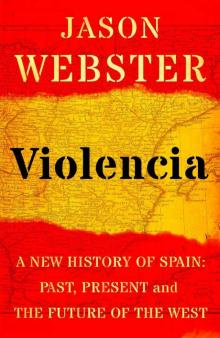 Violencia
Violencia Or the Bull Kills You
Or the Bull Kills You The Killing of El Niño Jesús
The Killing of El Niño Jesús The Spy with 29 Names
The Spy with 29 Names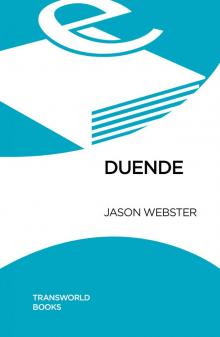 Duende
Duende Guerra
Guerra Sacred Sierra
Sacred Sierra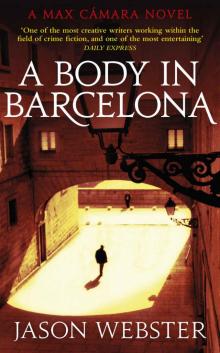 A Body in Barcelona: Max Cámara 5
A Body in Barcelona: Max Cámara 5 Fatal Sunset
Fatal Sunset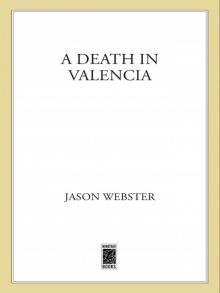 A Death in Valencia
A Death in Valencia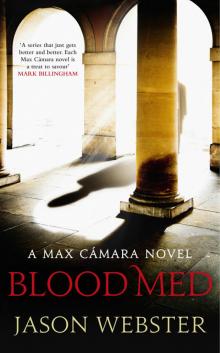 Blood Med
Blood Med Andalus
Andalus